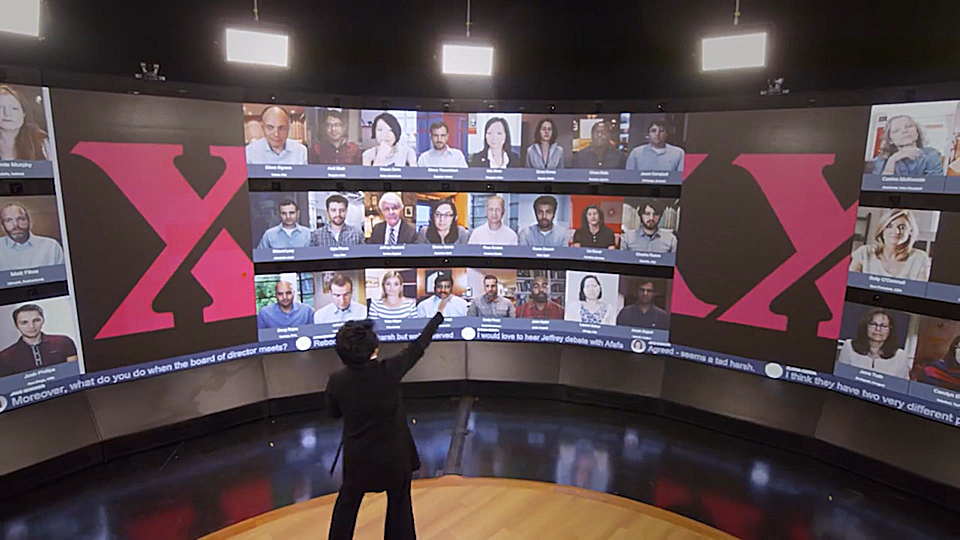Virtual Spaces
We're all now likely familiar with video conferencing. The technology has kept employees connected to businesses and students connected to classrooms during trying times. As good as it is, these platforms never give the particpant a feeling of being there, of participating in a natural way. Simple visual clues such as a teacher turning to face you when they talk to you, gets lost. It doesn't feel personal and that one to one connection doesn't happen.
Until now.
AVXI are partnering with X20 Media to bring virtual room solutions to the UK.

Virtual Classroom
The ‘Virtual Classroom’ is the future of remote education and training. It combines the benefits of live, instructor or moderator-led training with the power and flexibility of a cloud-based virtual platform. The ‘Virtual Classroom’ can support up to 128 remote participants from anywhere in the world that appear on dedicated avatar displays with directional audio. Students experience a unique interactive classroom environment between the remote and the in-room attendees.
All remote participants have a unique view of the physical room as they would if they were actually in the room.
When engaged by the teacher, they will turn / move towards and talk directly to
the individual, providing a much more natural interaction.
The ‘Virtual Classroom’ features ultra-high quality bi-directional audio/visual communication with intelligent multi-camera views, including a unique perspective view for each remote student. This enables instructors to engage with and deliver the same instructions and content simultaneously to onsite and remote students.
Virtual Meeting Room
Make no mistake. This is not video conferencing. This is a true collaborative meeting, combining physical presence with virtual. Your remote teams feel connected to the physical space as much as actually being there.
The design of the room and technology allow physical participants to turn and speak directly to remote participants as if they were actually in the room. Likewise, when a remote participant speaks, it comes from they're virtual seated position, giving a clear indication of who is speaking at any one time.
By being able to see all the physical participants, all the media presented in room and be fully aware when someone is speaking to you, remote participants feel far more connected and engaged and willing to participate.
Businesses with a distributed workforce understand that bringing everyone together to collaborate and discuss can be time consuming and costly. Whether it be a board meeting, sales summit or product update, your team needs to meet, speak and be heard. If it costs on average £1000 per person to bring them to head office, with travel, accommodation and subsistence to think of, then a meeting for 50 staff is costing your business £50,000 plus the time lost travelling and administration costs.
Particularly now, when home-working and remote employees are more common place due to COVID-19, virtual meeting technology can bridge the gap where traditional video conferencing and telephony fail, whilst creating a large return on investment and helping the environment by reducing pollution caused by travel.



